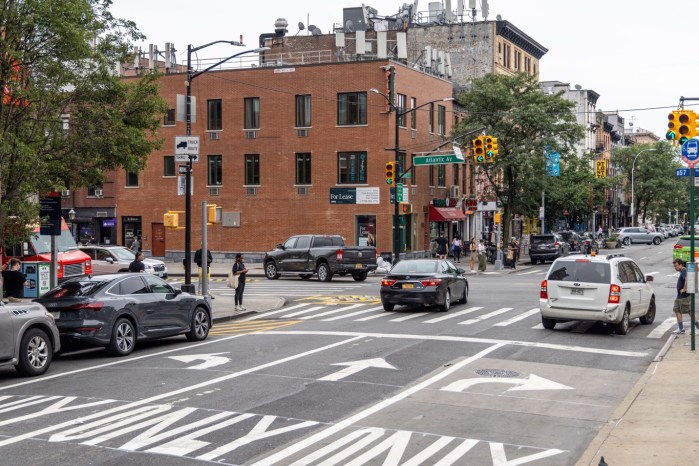Coney Island could get revitalized a lot sooner than you think.
So explained Mayor Michael Bloomberg, who said that the city was very close with brokering a deal to purchase huge swaths of seaside land from developer Joe Sitt — an impasse that has prevented his administration from going ahead with their plans to bring new life to the “world’s largest playground.”
“Fundamentally the deal is done,” Bloomberg said during a frank discussion over borough issues with this paper and its parent company, Community Newspaper Group, at our MetroTech headquarters. “It is very close to being completed.”
“In all fairness, Joe Sitt wants to — surprise, surprise — get the best deal he can get and the city is not going to pay anymore than what the land is worth. There is just a limit to what we can afford to pay.”
His announcement about Coney Island was just one of many issues he tackled during the hour-long discussion, which also focused on the perennially debated Atlantic Yards Project, the health of city hospitals and no-drinking rules in city parks and public areas, which the mayor personally violated when he was caught sipping wine while listening to the Philharmonic at a public park.
In late July, the City Council passed the rezoning of Coney Island, creating a 27-acre entertainment district between Surf Avenue and the Boardwalk. Just under ten of those acres would be devoted exclusively to amusements and arcades, city officials said.
The new zoning also allows for high rise hotels on Surf Avenue and 4,500 apartments north and west of the new district area.
The only fly in the city’s ointment was Sitt’s Thor Equities who owned ten acres of seaside land — six of which stood smack dab in the middle of Bloomberg’s plan for the area.
For over the last year, the city has been in negotiations to purchase the six acres from Sitt. While the developer spent more than $90 million to initially purchase the land, the city was offering over $60 million for the areas they needed, according to the New York Times.
At Monday’s sit down, Bloomberg did not say what the final — or soon to be final — purchase price was.
“I don’t remember the numbers,” he said coyly. “But we did not go out to spend more money than the land was worth.”
Calls to Thor Equities and City Councilman Domenic Recchia — one of the chief supporters of Coney Island’s rezoning — for comment were not returned as this paper went to press.
Bloomberg said that Sitt never wanted to develop the now re-zoned parcels he purchased.
“When you rezone, you’re [planning] for the next ten years,” the mayor said. “[Sitt] wanted to do something today. They got to pay the bills today.”
Even if Sitt wanted to develop the land, he would had eventually fallen in line with the city, Bloomberg explained.
“He couldn’t do anything,” he said. “He needs sewers and water and streets. If the city does not want to cooperate, he is going to spend a lot of time with a lot of money tied up.”
Bloomberg said that no matter what the cost, the purchase fell well within his “fiscal responsibility to spend the public’s money wisely” — something he plans to continue to do if elected to a third term.
“We are going to have to downsize every part of government,” he said, looking at the challenges ahead. “The question is can I find a way to maintain and improve services with less.”
Bloomberg would not speculate if he would increase NYPD academy classes if elected to another term, claiming that fiduciary constraints had already caused the city to lose 5,000 members.
“The law says I have to balance the budget,” he said. “We had to downsize the police department because we couldn’t afford a police department of that size. It’s not my job to build the biggest police department in the world, my job is to bring down crime and charge the commissioner with finding ways to do that.”
Bloomberg said he hopes the voters realize the difficult decisions he’s had to made to balance the budget when they go to the polls and see his name on the ballot knowing that he had circumvented two lawfully elected to referendums barring him from seeking a third term.
“We had provisions for these referendums,” he said. “It was a unique time in the city. The economy was starting to fall and the school system was on the verge of a major breakthrough, so I decided to go ahead and see if the city council wanted to change the law.”
“I was flattered that a lot of people urged me to run and the public is still going to have a choice,” he added. “The voters wanted someone independent and confident and hopefully they think I’m that way.”






















